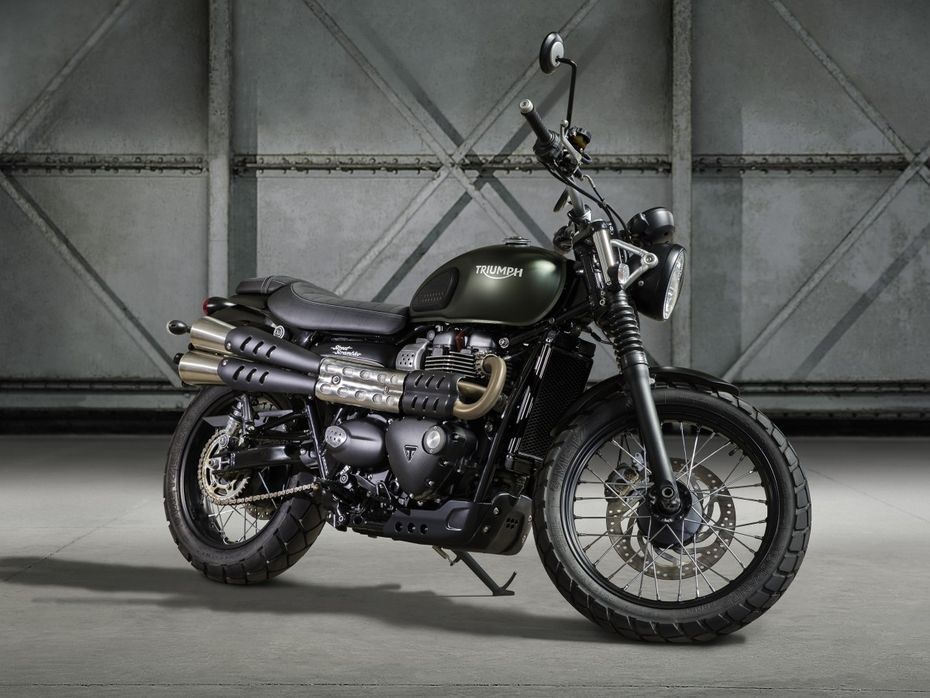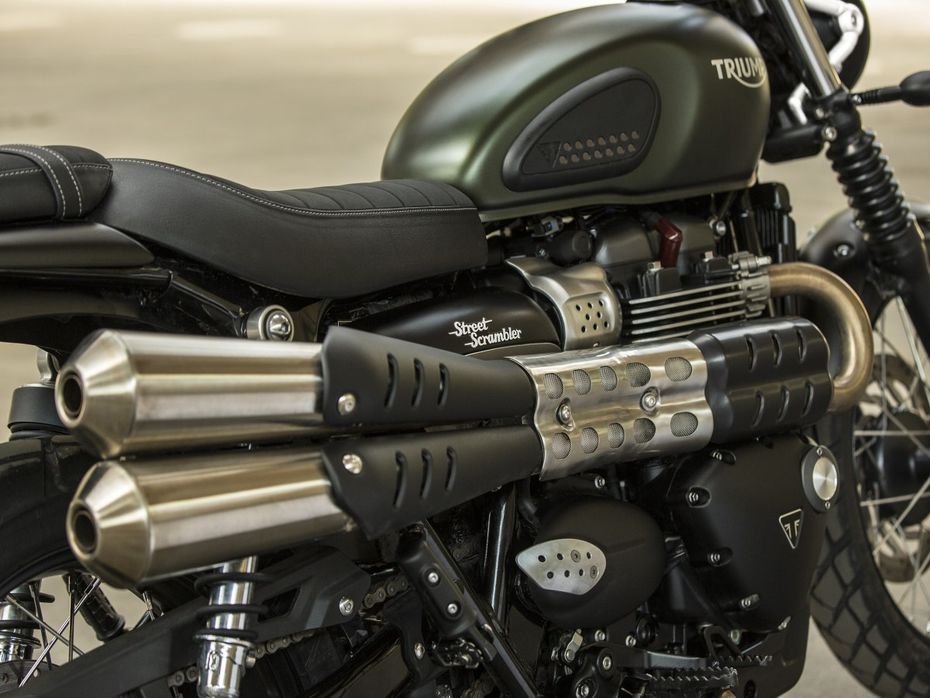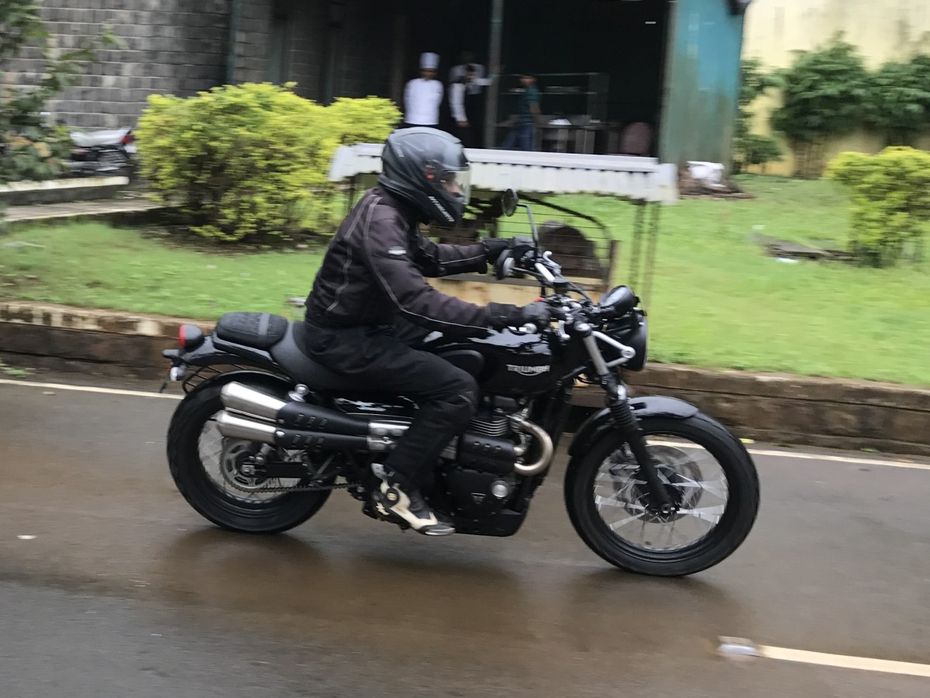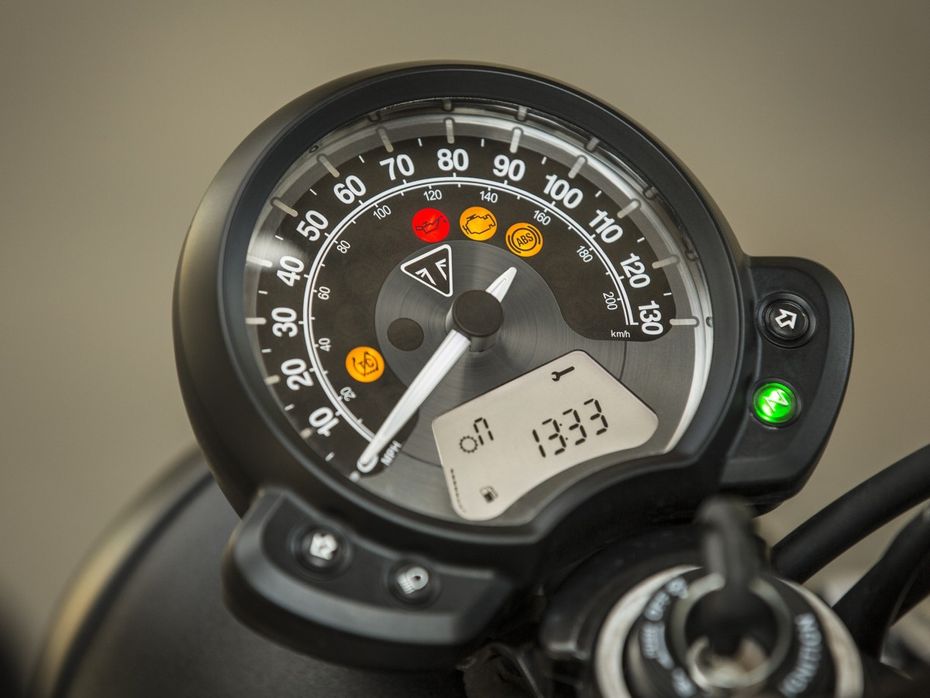
Ducati Scrambler Icon: Old vs New
- Apr 15, 2019
- Views : 5109


Scramblers can be a fun alternative to the highly capable but heavy adventure tourers provided you do not venture too far off road. Until recently, the Ducati Scrambler was the only option you had if you fancied the occasional and light off-roading but that changes with the advent of the Triumph Street Scrambler. The new Street Scrambler looks gobsmacking, packs a punch and is priced close to the Ducati Scrambler Icon. So, should your next mud trail be on the new Triumph Street Scrambler or the Ducati Scrambler Icon? Let's crunch some numbers.
Styling:
The Scrambler look has some very concise pointers. The base has always been a small bike frame with a small- to mid-capacity motor of the torquey kind. Long-travel suspension and dual-purpose tyres were other prerequisites. Tall handlebars and a flatter seat are others. For me, the defining feature of a Scrambler has been its high, side-mounted exhaust. Scramblers always have had a duality of purpose -- a road-going bike with off-road bits allowed it to venture into mud trails while the light weight kept things fast and manageable.

If it’s form we are looking for, the Triumph Street Scrambler wins hands down. Triumph’s design division has gone to great lengths to ensure its Modern Classic range stays true to the original old-school design and the Street Scrambler is no exception. The bike gets off-road bits like rubber knee grips on the fuel tank, bear claw footpegs, a flatter, longer rider seat and a sump guard. Then there is the high-mounted exhaust which will have you doing a double take if you pass one. As far as looks are concerned, Triumph has got it spot-on with the Street Scrambler.
The Ducati Scrambler, on the other hand, is a more modern take on the Scrambler business. Small and narrow, the frame is easy to get used to. The design is very 70's with its teardrop design fuel tank. The tank gets aluminum inserts on the sides lest you scuff the pretty yellow (or red) paint. The design is quite minimalistic and modern, with short fenders and alloy wheels and the generous gap between the rear wheel and fender that showcases the absence of a more traditional twin-shock layout. It swaps the high-mounted side exhaust for a stubby unit. It gets the wide, high-set handlebars though. The Ducati Scrambler is more of a modern reinterpretation of what a Scrambler would be in today's times. That said, we would love to see a side-mounted exhaust as an accessory at least.
Dimensions:
The Ducati Scrambler Icon is the smaller bike here but despite the narrow dimensions, it is wider than the Street Scrambler. That is because the wide handlebar puts the Scrambler Icon's width at 845mm compared to the Street Scrambler's relatively narrow 831mm. The Scrambler Icon is the taller one at 1150mm, 20mm up on the Street's 1120mm. Both bikes have the same 790mm seat height. Wheelbase too remains fairly identical -- the Icon's 1445mm to the Street's 1446mm. The Icon is lighter of the two; it weighs just 170kg (dry) compared to the Street at 206kg. The Icon's fuel tank too, despite being visually smaller, holds 13.5 litres compared to the Street's 12-litre unit.

Engine and Performance:
The Scramber Icon gets an 803cc air-cooled L-twin motor that makes 73PS at 8250rpm and 67Nm of torque at 5,750rpm. It gets a six-speed gearbox. The Street Scrambler meanwhile gets a 900cc liquid-cooled parallel-twin motor which makes 55PS at 6,000rpm and 80Nm of torque at 2,850rpm. Gearbox is a five-speed unit. Both bikes get traction control.
However, the motors are poles apart. The Ducati motor is an updated version of the Monster 796 and is a gruff one. It loves to rev and in the Scrambler Icon's lightweight chassis, delivers good performance. The Triumph motor is the more modern one here and a refined one at that. It is a torquey unit with most of the performance easily accessible. We reckon that the Scrambler Icon will be the quicker one here owing to its weight advantage of more than 30 kilos. The Street Scambler meanwhile will be more user-friendly.

Cycle Parts:
Ducati's trademark steel trellis frame finds its way here on the Scrambler Icon. Rake is 24 degrees and trail is 112mm. Suspension components include 41mm upside-down Kayaba forks with 150mm of wheel travel and a side-mounted rear Kayaba monoshock with 150mm of wheel travel. While the front suspension is non-adjustable, the rear can be adjusted for preload and rebound. Braking is via a single 330mm disc clamped to radially mounted 4-piston Brembo callipers and a 245mm disc clamped to a single-piston calliper. The bike uses 18-inch front and 17-inch rear alloys fitted with Pirelli MT 60 RS tyres.
The Street Scrambler meanwhile gets a tubular steel cradle frame. Rake and trail is 25.6 degrees and 109mm respectively. It gets conventional 41mm Kayaba forks up front and twin Kayaba rear dampers that are adjustable for preload at the rear. For braking, the Street Scrambler has a single 310mm disc clamped to Nissin 2-piston callipers and a 255mm disc with a Nissin 2-piston calliper. The wheels are a spoked affair with the 19-inch front and 17-inch rear wheel sporting Metzeler Tourance tyres.

Both bikes sport ABS and dual-purpose tyres. The Scrambler Icon is the more agile one here. It changes directions with ease and has sharper steering. The suspension setup is stiffer than the Street Scrambler, whose suspension absorbs road undulations with aplomb and remains planted at speed. It changes directions well but not as quickly or effortlessly as the Icon. It will be easier to live with as the Scrambler Icon's stiff suspension can be a bit of a bother for daily riding.

Value for money:
The Ducati Scrambler Icon, at Rs 6.97 lakh (ex-Delhi), is Rs 1.13 lakh more affordable than the Triumph Street at Rs 8.1 lakh (ex-India). For that, you get better performance and dynamics but the tradeoff is a stiff ride and refinement. Off-road too, the stiff suspension crashes a bit and the Scrambler Icon seems happier on the road than off it. If you want a more capable Ducati, the Scrambler has a Desert Sled variant priced at Rs 9.32 lakh (ex-Delhi).
The Triumph Street Scrambler, on the other hand, looks fantastic, is more comfortable and refined. The off-road bits justify its price to a certain degree. The torquey motor is easier to ride fast, and overall, the bike does not take much getting used to. The bike performs well on the road and promises to work well off it too. It might not be as quick as the Scrambler but it is easier to live with. If you are out for an authentic Scrambler experience, the Triumph showroom is where you should head to.


Ducati Scrambler Icon: Old vs New

Ducati Scrambler Vs Triumph Bonneville T100: Comparison Review

Ducati Scrambler 1100 Sport vs BMW R nineT Scrambler: Spec comparison

Ducati Scrambler 1100 vs Ducati Scrambler 800 Icon - What’s...

2025 Ducati Scrambler Unveiled Globally

EICMA 2022: 2023 Ducati Scrambler Are More Funky And Tech Laden

Ducati Uncovers Two Striking, New Scramblers For 2022

More Ducati Scramblers Arrive Into The Country

2021 Ducati Scrambler Variants: One For Everyone?

Hit The Trails With Ducati’s BS6 Scrambler Range
 Triumph Bonneville T120
Triumph Bonneville T120
 Ducati Scrambler 1100
Ducati Scrambler 1100
 Triumph Speed Twin 900
Triumph Speed Twin 900
India's largest automotive community
 Ducati Panigale V4
Rs. 27.72 Lakh
Ducati Panigale V4
Rs. 27.72 Lakh
 Ducati Streetfighter V4
Rs. 24.62 Lakh
Ducati Streetfighter V4
Rs. 24.62 Lakh
 Ducati Monster
Rs. 12.95 Lakh
Ducati Monster
Rs. 12.95 Lakh
 Ducati Diavel V4
Rs. 25.91 Lakh
Ducati Diavel V4
Rs. 25.91 Lakh
 Ducati Panigale V2
Rs. 20.98 Lakh
Ducati Panigale V2
Rs. 20.98 Lakh